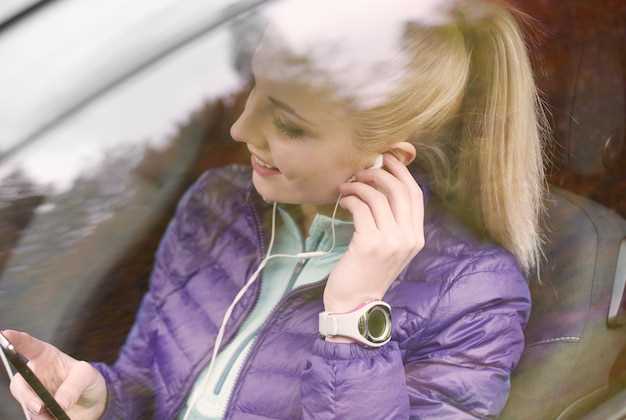
The VW Corrado, a beloved classic among car enthusiasts, is known for its sleek design and spirited performance. However, one common issue owners face is road noise that can detract from the overall driving experience. This is where effective soundproofing comes into play, transforming your ride into a quieter, more enjoyable environment. By implementing specific techniques, you can significantly reduce unwanted noise and enhance the comfort of your cabin.
To achieve optimal soundproofing for your VW Corrado, it is essential to understand the various sources of noise that penetrate the cabin. These may include road vibrations, wind noise, and sounds from the engine compartment. By addressing these elements systematically, you can create a more serene atmosphere inside your car. From adding sound-deadening materials to sealing gaps effectively, these soundproofing tips will guide you in making meaningful improvements to your ride.
In this article, we will explore practical techniques and materials that can help you isolate sound, reduce vibrations, and ultimately create a quieter cabin space. Whether you’re a DIY enthusiast or looking to hire a professional, the insights shared here will empower you to take your Corrado’s soundproofing to the next level and enjoy a more refined driving experience.
Removing OEM Sound-Deadening Material
Removing the OEM sound-deadening material from your VW Corrado can significantly enhance the soundproofing of your cabin and improve your overall ride quality. The factory-installed materials, while effective to some extent, often wear down over time and may not provide the desired level of noise reduction.
To begin the process, you will need a few essential tools: a heat gun or hairdryer, a putty knife or scraper, and some adhesive remover. Start by heating the sound-deadening material carefully; this will soften the adhesive and make removal easier. Be cautious not to overheat the surfaces, as this can cause damage.
Once the material is warm, use a putty knife to gently pry it away from the floor and other surfaces. Apply even pressure to avoid damaging the underlying components. In some areas, the material may come off in chunks, while in others, it may require more effort.
After removing the OEM sound-deadening material, it’s essential to clean the surfaces thoroughly. Use an adhesive remover to eliminate any residue left behind. A clean surface ensures better adhesion for any new soundproofing materials you may choose to install.
Consider upgrading to modern sound-deadening products that offer superior noise reduction properties. These options can significantly enhance your ride experience by minimizing unwanted road noise, vibrations, and sound from the outside environment.
Choosing the Right Soundproofing Materials

When it comes to enhancing the comfort of your VW Corrado, selecting the appropriate soundproofing materials is crucial for a quieter ride. The effectiveness of soundproofing primarily depends on the material’s ability to absorb and block sound waves. Here are some key materials to consider:
| Material | Properties | Application Area |
|---|---|---|
| Mass Loaded Vinyl (MLV) | Dense, flexible, and excellent for blocking noise | Floor and door panels |
| Foam Panels | Lightweight, effective at absorbing sound frequencies | Roof and trunk areas |
| Butyl Rubber Mat | Effective vibration dampening and noise reduction | Floor and firewall |
| Acoustic Carpet | Soft texture and sound absorption properties | Interior flooring |
| Sound Deadening Spray | Easy application and seals gaps for noise reduction | Hard-to-reach areas |
Choosing the correct materials will ensure that your VW Corrado is equipped to reduce unwanted outside noise effectively. Combining different materials can also enhance performance, making your driving experience smoother and more enjoyable.
Sealing Gaps and Cracks in the Cabin
To enhance the soundproofing of your VW Corrado and achieve a quieter driving experience, addressing gaps and cracks in the cabin is essential. Sound waves can easily penetrate through even the smallest openings, diminishing the overall effectiveness of your noise reduction efforts.
Begin by inspecting the cabin for any visible gaps or cracks around the doors, windows, and dashboard. Common problem areas include the edges of door seals and the spaces around the window frames. Use a flashlight to reveal hard-to-see sections that may be allowing unwanted noise to enter.
Once you have identified these areas, apply a high-quality sealant or weather stripping to fill the gaps. Products specifically designed for automotive use are highly recommended, as they can withstand temperature fluctuations and maintain elasticity over time. Consider using silicone or polyurethane sealants for their durability and excellent adhesive properties.
For larger gaps, such as those found in the firewall or floor pan, consider using soundproofing foam or mass-loaded vinyl. These materials provide additional barriers against sound and vibrations, contributing significantly to a quieter cabin environment.
Don’t forget to check the trunk area as well; seals around the trunk lid can often degrade, allowing noise to seep into the cabin. Replacing worn seals can make a noticeable difference.
By methodically sealing gaps and cracks, you will not only improve the soundproofing of your VW Corrado but also enhance the overall driving comfort. A quieter cabin allows for a more enjoyable driving experience, letting you focus on the performance of your vehicle and the enjoyment of the journey.
Installing Sound-Absorbing Mats and Panels

To enhance the overall ride quality of your VW Corrado and achieve a quiet cabin, installing sound-absorbing mats and panels is an effective solution. These materials are specifically designed to reduce noise from outside sources and vibrations from the engine and road, creating a more enjoyable driving experience.
Begin by selecting high-quality sound-absorbing mats. These mats can be applied to various surfaces including the floor, doors, and trunk. When installing, ensure the surfaces are clean and dry for optimal adhesion. Measure and cut the mats to fit snugly in their designated areas, applying them strategically where noise penetration is the highest.
In addition to mats, consider incorporating sound-absorbing panels. These panels can be placed in the door interiors and around the wheel wells, areas notorious for noise intrusion. They not only reduce sound but also enhance the aesthetic of your vehicle’s interior. Use adhesive suitable for the materials you’re working with to secure the panels properly.
For the best results, combine mats and panels. This dual approach greatly minimizes sound waves, further contributing to a peaceful ride. After completing the installation, take the time to test drive your Corrado; you’ll notice a significant decrease in ambient noise and improvement in overall comfort.
Upgrading Door Seals for Improved Noise Isolation
Improving the soundproofing of your VW Corrado cabin can significantly enhance your ride quality. One effective method to achieve this is by upgrading the door seals. Here’s a detailed approach to understand why and how to do it.
Old or worn door seals can allow unwanted noise to enter the cabin, disrupting the quiet atmosphere you desire while driving. By replacing these seals, you can create a more soundproof environment inside your vehicle.
Here are some essential steps to upgrade your door seals:
- Choose Quality Door Seals: Opt for high-quality rubber seals or foam weather stripping that fits your VW Corrado model. Look for products specifically designed for sound isolation.
- Remove Old Seals: Carefully take off the existing door seals. Make sure to remove any adhesive residue to ensure a clean surface for the new seals.
- Prepare the Surface: Clean the door frame thoroughly. A clean surface ensures better adhesion and a proper seal, minimizing noise intrusion.
- Install New Seals: Align the new seals properly before adhering them. Start from one end of the door and work your way around, ensuring there are no gaps.
- Test the Fit: Close the doors after installation to check if they fit snugly. Listen for any wind or road noise that may still be present. Additional adjustments might be necessary.
Upgrading door seals not only reduces noise but also helps in maintaining the temperature within the cabin, providing a more comfortable and quiet ride. This simple upgrade can lead to a noticeable improvement in your overall driving experience.
Testing and Adjusting After Installation
Once the soundproofing materials are successfully installed in your VW Corrado, the next crucial step is to conduct thorough testing and make necessary adjustments. This process ensures that the ride quality is enhanced and that unwanted noise is minimized as intended.
Start by taking the vehicle for a test drive in various conditions. Pay attention to common sources of noise, such as road vibrations, engine sounds, and wind noise. Evaluating the sound levels during different speeds and road surfaces will help identify areas where soundproofing may need further enhancement.
Listen for Noise Sources
During your test drive, listen closely for specific sounds that may still penetrate the cabin. Focus on areas around the doors, windows, and the trunk. If you notice persistent noise, it may indicate that additional soundproofing material is necessary or that the existing material may not be adequately secured.
Adjusting Soundproofing Materials
If certain areas still allow excessive noise, consider adding more soundproofing material. Ensure that the insulation is tightly adhered and covers any gaps or openings. It may be effective to use acoustic mats or additional dampening materials for areas that still seem vulnerable.
Evaluate the Comfort Level
In addition to sound testing, assess how the changes have improved your overall driving comfort. A well-soundproofed vehicle should result in a quieter cabin, thus allowing for a more pleasant driving experience. If the improvements fall short, you may need to revisit your soundproofing choices and consider alternative solutions.
By researching and adjusting based on your findings, you can effectively hone the soundproofing in your VW Corrado, leading to a quieter and more enjoyable ride.













